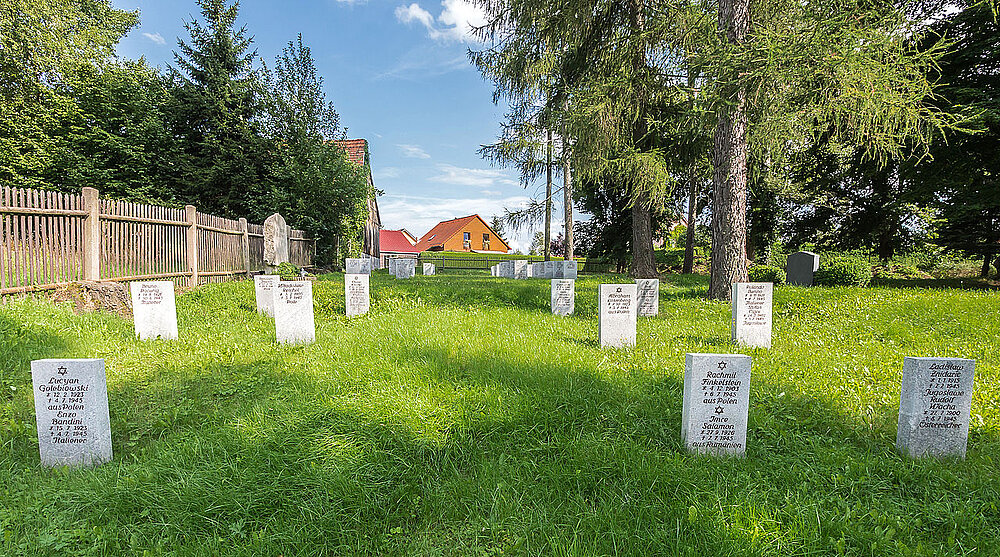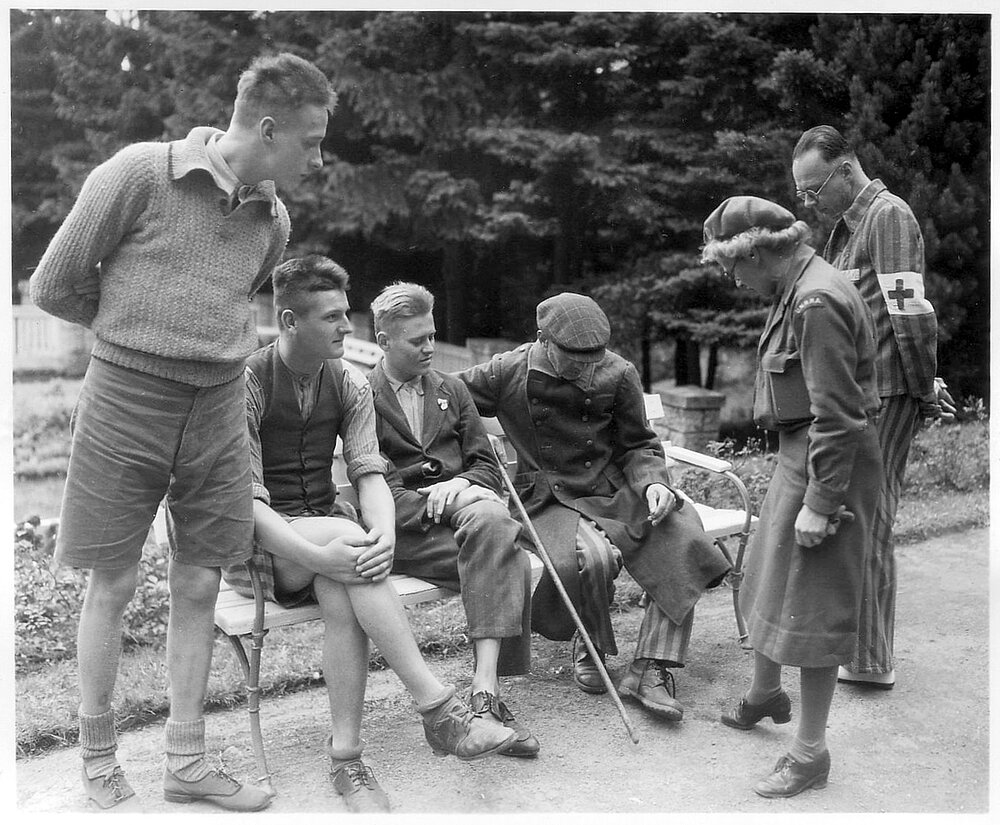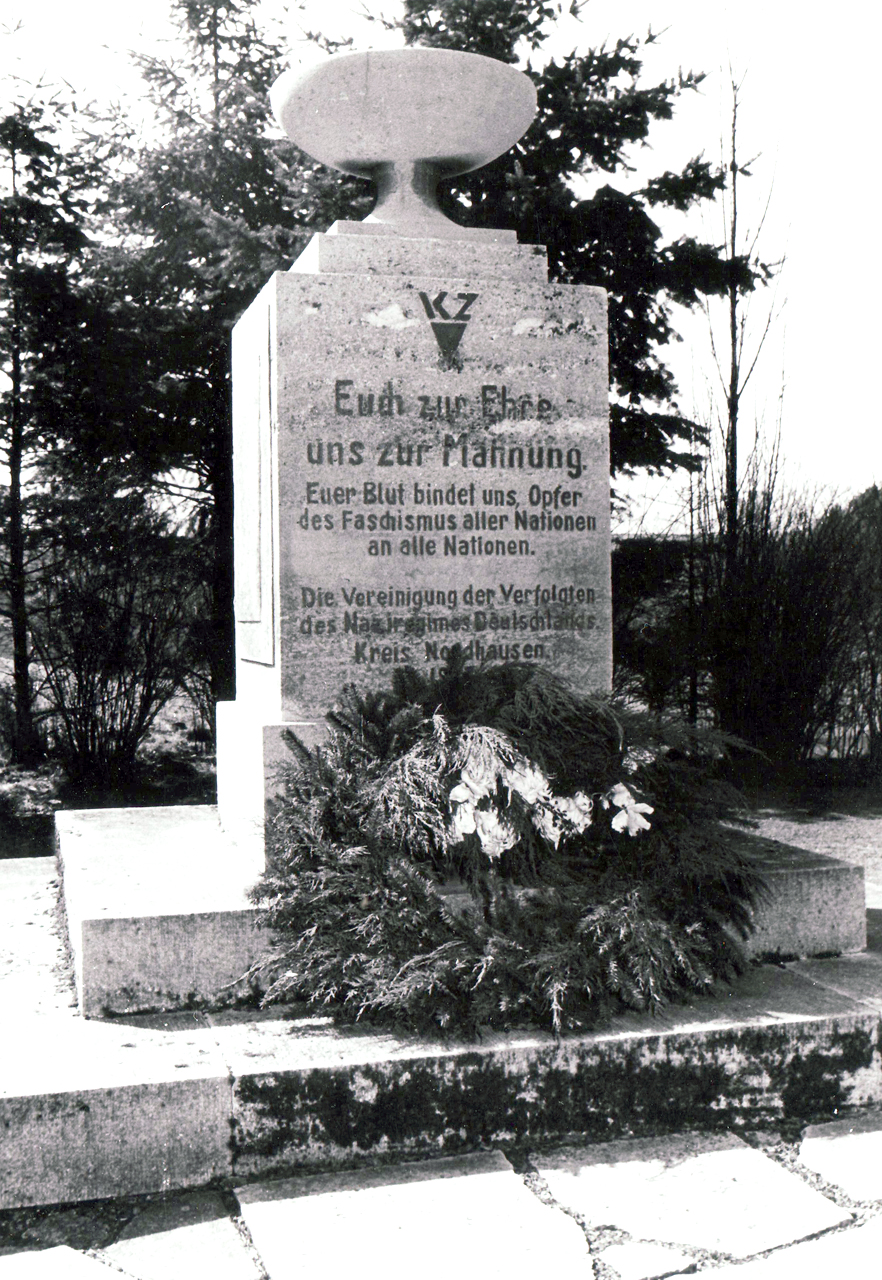#otd1945.05.29
The Dying Continues
Josef Dvořáček died in the tuberculosis hospital in Blankenhain near Weimar on 29 May 1945. The 44-year-old Czech had been imprisoned in the Buchenwald concentration camp since 1939 and contracted tuberculosis (TB) there in 1944.
TB was the foremost deficiency disease in the concentration camps. In 1944, approximately one in ten Buchenwald inmates were inflicted with it. Its treatment and the necessary isolation of the contagious tuberculosis patients presented the American liberators with particularly difficult challenges.
In the Buchenwald DP camp – as the liberated camp was called – the doctors and orderlies of the 45th Evacuation Hospital cared for the sick until the end of April 1945. One of their main tasks was to organize the transfer of the tuberculosis patients to the former state sanatorium in Blankenhain, which had been converted into a tuberculosis hospital.

The Buchenwald survivors were x-rayed before being transferred to Blankenhain. The 21-year-old Sinte Siegfried Schütt died in Blankenhain on 4 February 1946.
(Buchenwald Memorial)
The transfer process got underway in early May. The hospital continued operations despite changing ownership in July 1945. Many survivors were treated there for months – in some cases until the following year – before they were able to return home or were transferred to other sanatoria.
Nevertheless, in Blankenhain the dying continued. In the months following the liberation, 265 Buchenwald inmates died there. Like Josef Dvořáček they were laid to rest in the Blankenhain cemetery.

In addition to the concentration camp survivors, the dead buried here also include 63 former forced labourers and prisoners of war who died in the hospital.
NoRud / Wikimedia Commons, CC-BY-SA-4.0, no Changes made
There were also many tuberculosis patients among the inmates liberated from the Mittelbau-Dora concentration camp. Starting in May 1945, the UN relief agency UNRRA (United Nations Relief and Rehabilitation Administration) transferred them to various sanatoria in Sülzhayn near Nordhausen. One of them was the 17-year-old Jan Imich. He had been sent to Dora on a clearance transport from the Gross-Rosen concentration camp in February 1945. By that time he was already so weak that he could no longer work. The UNRRA transferred him to Sülzhayn in early June 1945. Six weeks later, he left the sanatorium at his own request and returned home. He later recalled: “My health was improving rapidly and towards the end of July we were told by the Russians that they arranged for a transport to Poland […]. Some more serious cases were left behind.”

Photo: Edward Vetrone (U.S. Army Signal Corps) (National Archives Washington)
Many other patients had to remain in Sülzhayn for treatment for several months. One was the Pole Josef Behagen, who was there for eight months before being transferred to the Bergen-Belsen DP camp in 1946. As he was still suffering from the damage to his health caused by his imprisonment, it would be years before he finally left the country.

(Stadtarchiv Nordhausen)
In Sülzhayn as well, many of the deportees succumbed to the illness in the weeks and months following the liberation, despite intensive medical care. More than 30 inmates known by name died in the sanatoria there, as did approximately 20 former forced labourers from the region. The latter had likewise been taken to Sülzhayn for treatment after their liberation and died of tuberculosis. The dead, numbering somewhat over 50, lie buried in the Sülzhayn cemetery. In 1947, the Vereinigung der Verfolgten des Naziregimes (Association of Victims of the Nazi Regime) erected a monument there in their memory.
(Anett Dremel and Michael Löffelsender)
Source: “Erinnerungen von Jan Imich”, September 1998 (Mittelbau-Dora Concentration Camp Memorial).
Jens-Christian Wagner, Ellrich 1944/45: Konzentrationslager und Zwangsarbeit in einer deutschen Kleinstadt, Göttingen 2009.
